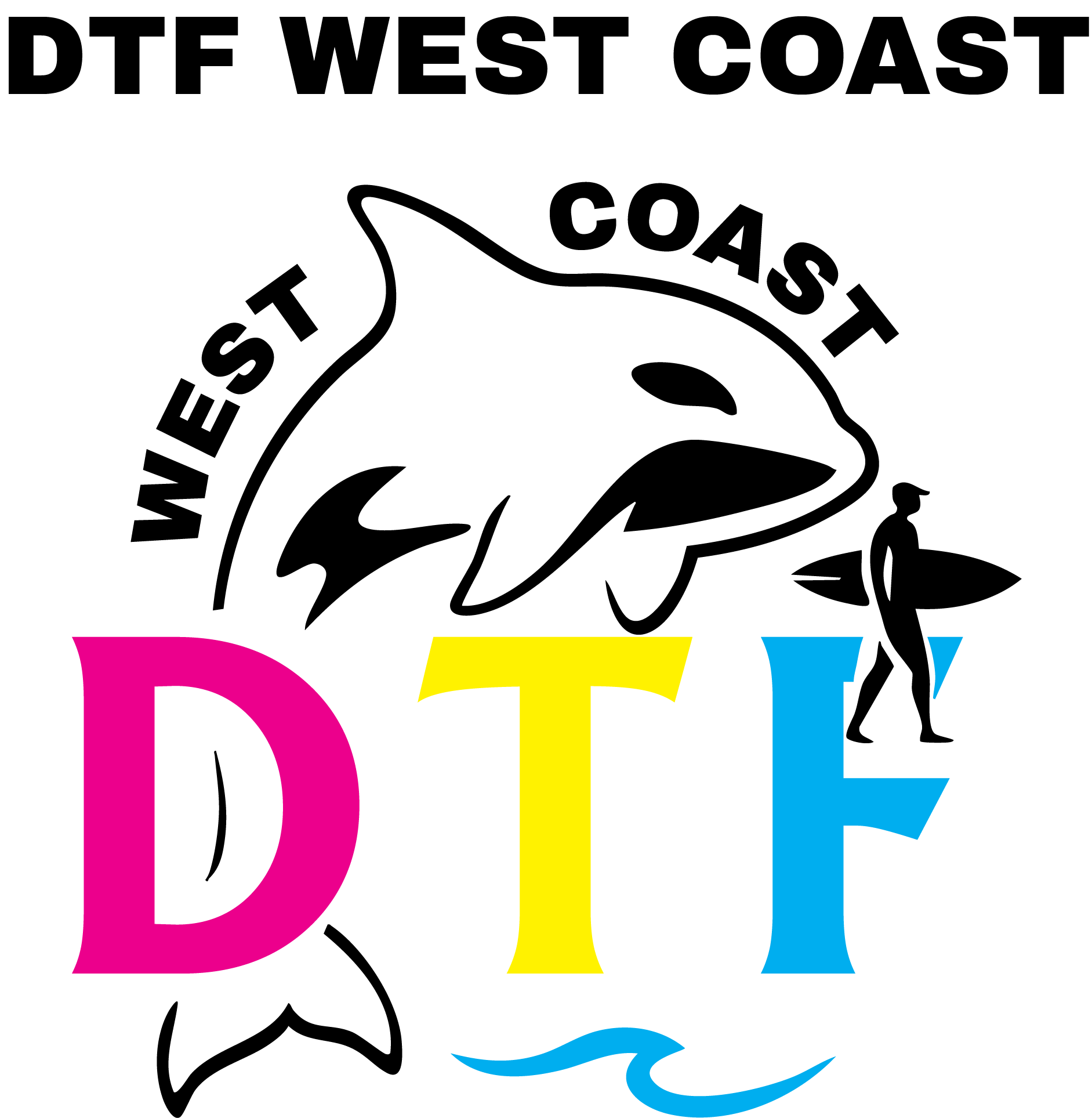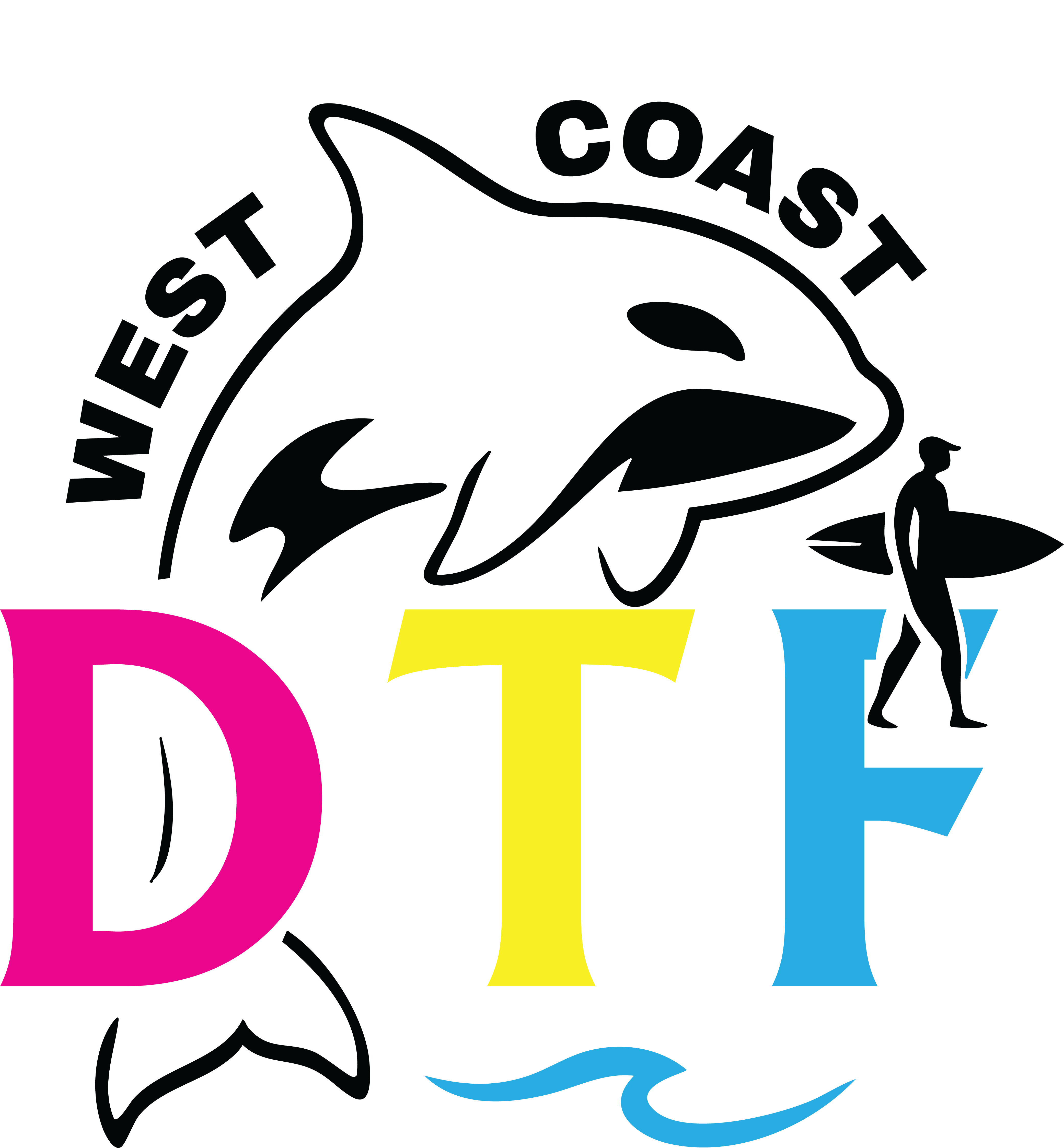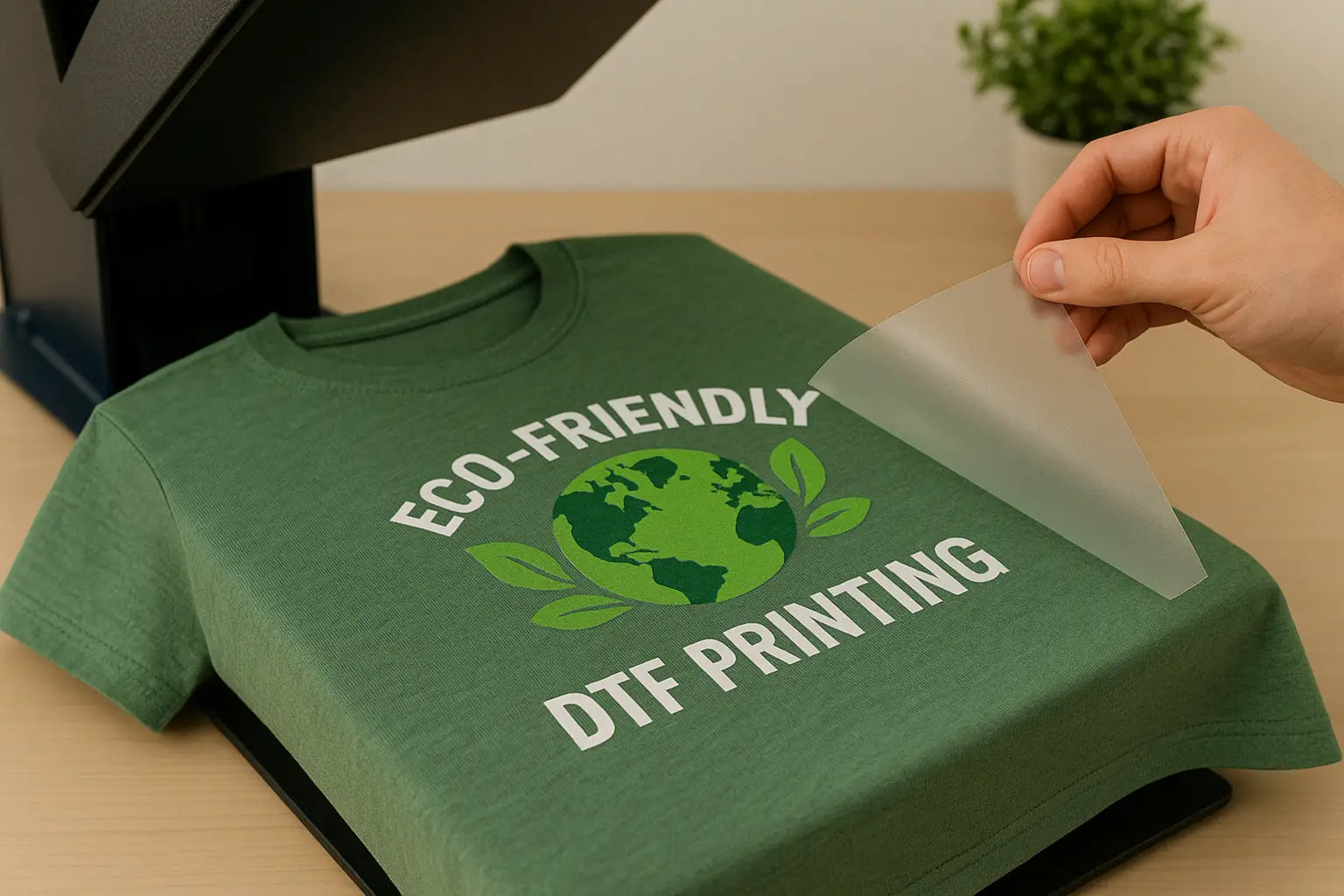The move toward sustainability in the clothing industry is more than simply a fad. It's starting to become commonplace. The fashion business is changing as people become more aware of what they wear and its manufacturing. Eco friendly DTF printing (Direct to Film printing) is one significant breakthrough propelling this shift. This guide is intended for anyone with an interest in fashion, printing, or the environment in general.
Let's have a look at this creative approach that combines sustainability, fashion, and functionality in a way that has never been done before.
What Is Eco Friendly DTF Printing?
Eco friendly DTF printing is a process where designs are printed onto a film using non toxic DTF inks and then transferred onto fabric using heat and pressure. Unlike older methods that can produce significant waste and use harsh chemicals, this technique leans into environmentally safe printing methods that are gentler on the planet.
And here’s the best part: it doesn’t sacrifice quality. You still get vibrant, durable designs with a soft touch, while keeping things clean and green.
Why Is DTF Printing Gaining Popularity Sustainably?
Sustainability in fashion used to mean sacrificing bold prints and color options, but sustainable DTF transfers have changed that. Here’s why:
1. Non Toxic DTF Inks Are Safer for Everyone
The inks used in eco friendly DTF printing are water-based DTF ink formulas. They are free from harmful solvents and heavy metals. That means less impact on factory workers, wearers, and the environment.
2. Minimal Waste With DTF Gang Sheet Technology
By using DTF gang sheet layouts, printers can place multiple designs on a single sheet. This minimizes leftover film and wasted ink. That makes it one of the most low-impact printing techniques available.
3. Works Well With Green Garment Printing Initiatives
Green garment printing with DTF guarantees that your sustainable fabric won't be compromised by harmful printing techniques. Regardless of whether you're using recycled polyester or organic cotton.
4. Energy Efficient Process
The fact that DTF utilizes less heat and water than screen printing or sublimation adds to its allure as a sustainable fashion printing technique.
How It Supports Ethical Apparel Production
A growing number of fashion brands are shifting to ethical apparel production, which means considering the welfare of workers and the environmental footprint at every stage. Eco friendly DTF printing plays a key role here:
-
Safer working conditions: No exposure to harsh chemicals.
-
Reduced energy use: quicker print to garment timeframes, smaller equipment, and less heat.
-
Reusable materials: A large number of the films and tools are recyclable or reusable.
Comparing DTF to Traditional Methods
|
Feature |
Traditional Printing |
Eco Friendly DTF Printing |
|
Ink type |
Solvent based |
Water based DTF ink |
|
Fabric compatibility |
Limited (usually specific fabrics) |
Wide range including cotton, blends, synthetics |
|
Waste |
High |
Low, especially with DTF gang sheet |
|
Worker safety |
Risk of exposure to chemicals |
Non-toxic DTF inks |
|
Energy and water use |
High |
Low impact printing techniques |
Real World Example: Brands Making the Switch
Small and large fashion brands alike are switching to sustainable DTF transfers. The outcomes are the same whether a large label releases an ethical collection or a boutique prints eco friendly designs: long lasting, high quality prints without endangering the environment.
One such instance is the rise of streetwear firms that prioritize sustainability while maintaining flexibility by using eco friendly DTF printing for limited drops.
What to Consider Before Going Green with DTF
If you're thinking about making the switch to eco friendly DTF printing, here are a few tips:
-
Check your inks: Make sure they’re certified non toxic DTF inks.
-
Choose water based: Always opt for water based DTF ink over solvent based alternatives.
-
Use gang sheets: Efficient design layout saves material and money.
-
Start small: Test on organic cotton or recycled blends before scaling.
-
Partner with ethical suppliers: Align your sourcing and printing values.
Conclusion
Eco conscious consumers are asking for more than just good looking clothes. They want to feel good about wearing them, too. Eco friendly DTF printing gives brands and creators a real chance to meet that demand.
The process demonstrates that green printing may be effective and economical, ranging from non toxic DTF inks and low impact printing techniques to sustainable DTF transfers and more intelligent design layouts with DTF gang sheet formats.
It's time to investigate the realm of green clothing printing if you're prepared to save waste, safeguard employees, and still produce striking, eye catching patterns. Additionally, for a head start, visit DTF West Coast, your go to resource for reliable, moral printing services.
Frequently Asked Questions
1. What makes DTF printing eco friendly?
It uses non toxic DTF inks, water based DTF inks, and DTF gang sheets, reducing waste and harmful emissions for safer, greener garment printing.
2. Is eco friendly DTF printing safe for skin?
Yes, non toxic DTF inks are water based and safe for skin. That make them ideal for kids' clothes and everyday wear.
3. Can I use DTF on organic fabric?
Absolutely. It pairs well with organic cotton and other green textiles, supporting ethical apparel production efforts.
4. Does green DTF printing cost more?
Not always. While some sustainable fashion printing tools may cost more upfront, reduced waste and efficient printing often lower long term costs.
5. Are there color limitations with eco friendly DTF?
No. Eco friendly DTF printing delivers bold and vibrant colors. Like traditional methods, without harmful chemicals.



Share:
Why Hot Peel DTF Transfers Are the Smart Choice for Fast, High-Quality Printing
Top 10 Questions Customers Ask About DTF Printing – Answered